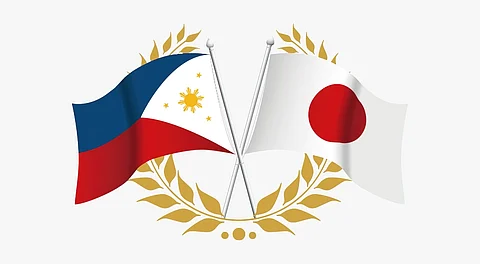
- NEWS
- the EDIT
- COMMENTARY
- BUSINESS
- LIFE
- SHOW
- ACTION
- GLOBAL GOALS
- SNAPS
- DYARYO TIRADA
- MORE

Japan has become one of the Philippines’ key security partners, playing a vital role in the country’s military modernization. Together, both nations have taken a more assertive stance in regional defense.
As geopolitical tensions in the South China Sea continue to intensify, Tokyo has moved from diplomacy to concrete support, supplying defense equipment, training access, and advanced surveillance systems —helping the Armed Forces of the Philippines (AFP) build a credible defense posture.
Japan has emerged as a cornerstone of the Philippines’ multi-billion-peso defense modernization program in recent years.
Through the newly launched Official Security Assistance (OSA) program, Japan has delivered critical aid, including coastal surveillance radar, maritime sensors, and high-speed patrol boats — all at no cost to Manila.
Radar, surveillance assets
A key contribution from Japan to Philippine defense is the procurement of advanced air defense radar systems from Mitsubishi Electric Corporation, seen as vital in addressing the country’s evolving security challenges.
The Philippine Air Force’s newly acquired Japan-made air surveillance radar system, or ASRS — J/FPS-3ME fixed radar deployed in Northern Luzon, was officially turned over in December 2023, allowing the country to improve its long-range aerial monitoring.
Also, the Philippines accepted delivery of four units of ASRS, consisting of 3 FPS-3ME fixed and a TPS-P14ME mobile radar platform together with radar support facilities, including a Radar Tower and Radome, Command and Control Building, Communications Infrastructure, Electric Power Generator building, and housing for the mobile radar and vehicles.
The radar system, installed at Wallace Air Station in San Fernando City, La Union, is operated and maintained by the PAF’s 580th Aircraft Control and Warning Wing.
Mobility and maritime vigilance
Japan has played a critical role in boosting the Philippines’ maritime security and mobility.
Among the major contributions were five TC 90 maritime patrol aircraft delivered in 2017 and 2018, which extended the Navy’s surveillance range over contested waters.
In 2019, the Japan Ground Self-Defense Force supplied spare parts for UH 1H helicopters, helping the Philippine Air Force revive aircraft crucial for transport and disaster response.
At sea, Japan’s most visible support came in the form of multi-role response vessels (MRRVs), financed through soft loans from the Japan International Cooperation Agency (JICA). These included the 97-meter BRP Teresa Magbanua and BRP Melchora Aquino, the Philippine Coast Guard’s largest and most advanced patrol ships.
In May 2025, the government announced the fast-tracked procurement of five more vessels of the same class, set for delivery starting in 2027 and completion by 2030. Built in Japan and based on the Kunigami-class design, the ships can reach speeds of 24 knots and patrol up to 4,000 nautical miles.
So far, Japan has provided the Philippines with 13 vessels through JICA assistance: 10 44-meter MRRVs, one 56-meter unit (BRP Corregidor), and two 97-meter flagships.
Defense ties strengthened
On 8 July 2024, the Philippines and Japan signed the Reciprocal Access Agreement (RAA), facilitating joint military activities, force movements, and jurisdictional rules for visiting troops.
President Ferdinand Marcos Jr. ratified the pact in November 2024, which the Senate approved in December. Japan’s National Diet finalized the landmark defense deal in June 2025.
The RAA enhances military cooperation and interoperability between the Armed Forces of the Philippines and the Japan Self-Defense Forces, marking a major step forward in regional security and joint training efforts.
Shared commitment to regional peace
Japan’s growing defense cooperation with the Philippines highlights Tokyo’s shifting security priorities and its rising concern over China’s assertiveness in the region.
Despite the 2016 arbitral ruling that invalidated China’s expansive South China Sea claims, its enforcement remains elusive. Still, Japanese officials have repeatedly voiced “grave concern” over the escalating tensions.
On the ruling’s ninth anniversary, Japanese Foreign Minister Iwaya Takeshi reaffirmed Japan’s support for the Philippines and the international rule of law.
“Today, nine years have passed since the issuance of the Arbitral Tribunal’s award under the provisions of the United Nations Convention on the Law of the Sea (UNCLOS),” Iwaya said, calling the ruling “final and legally binding.”
